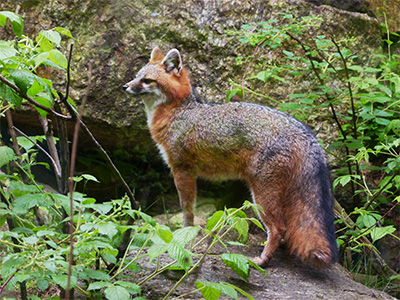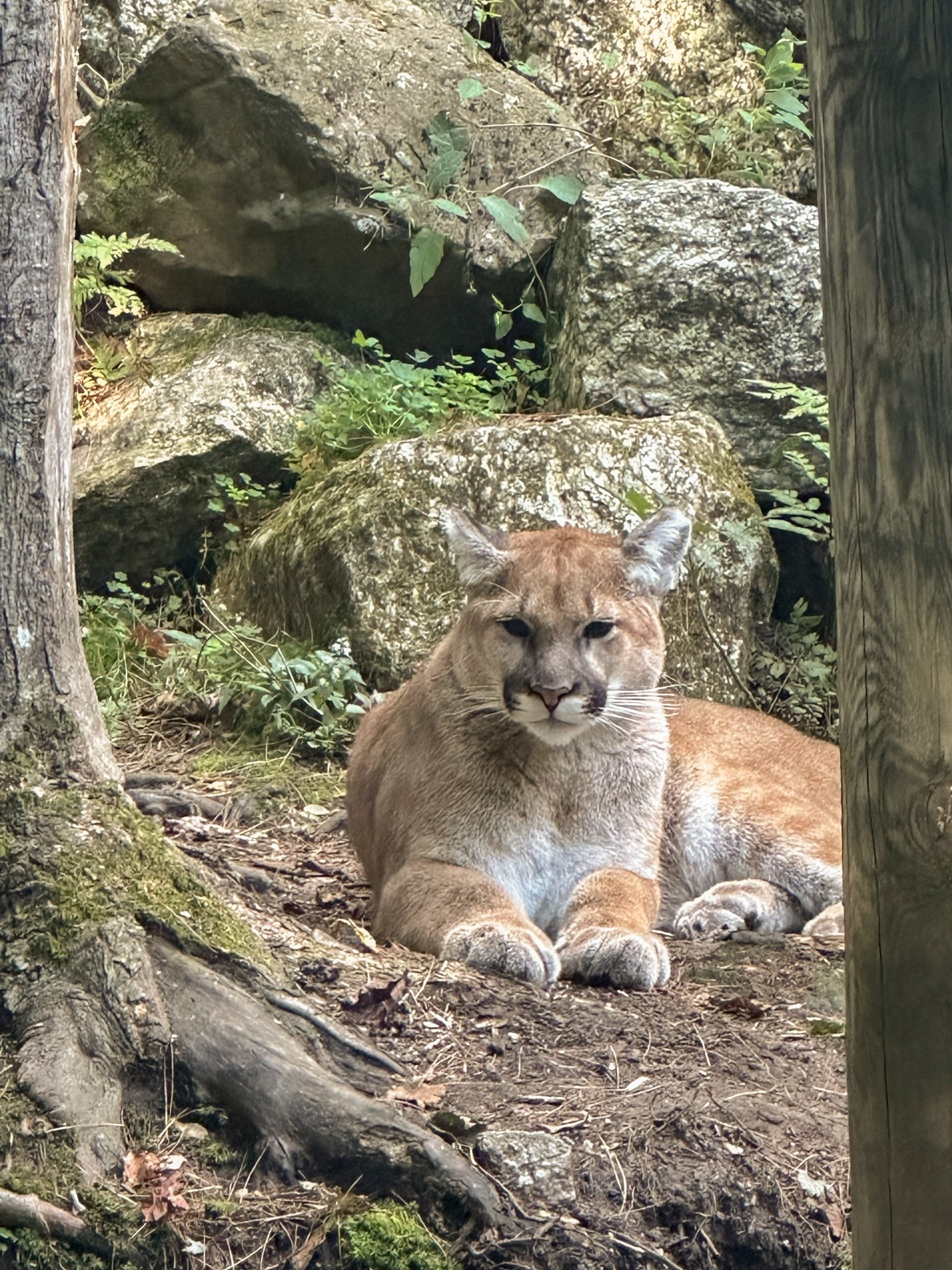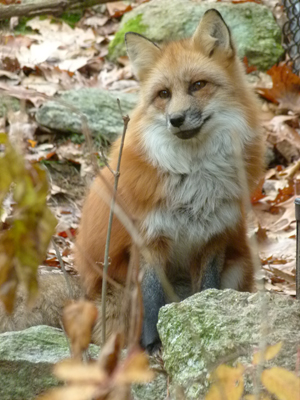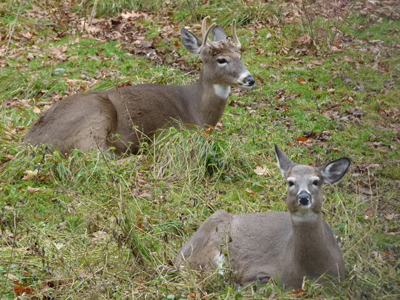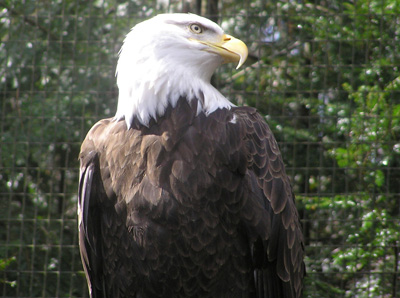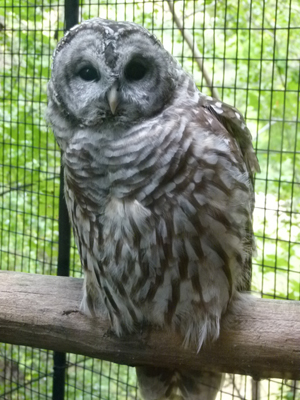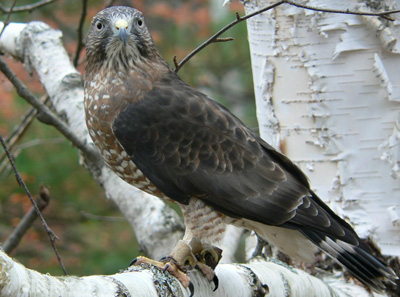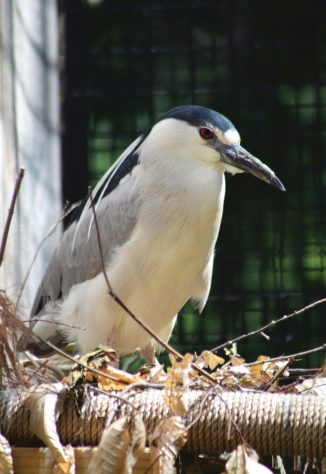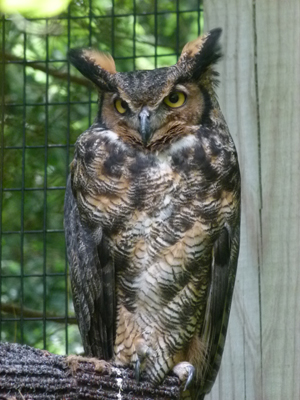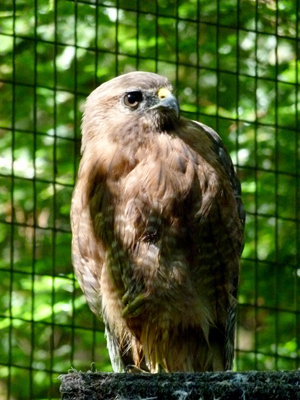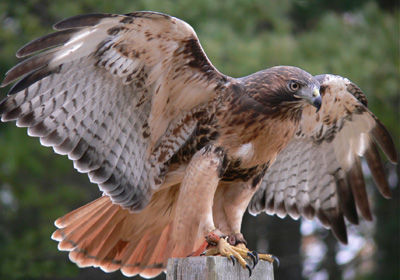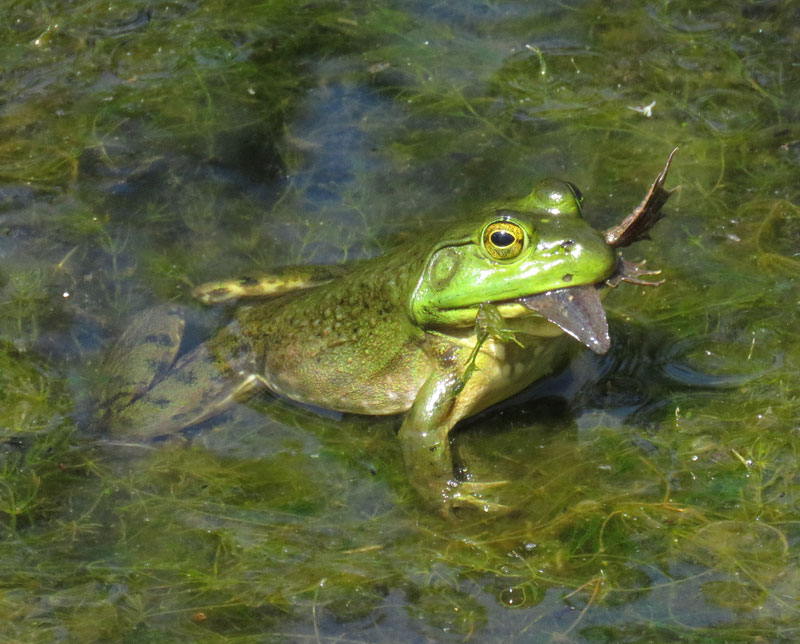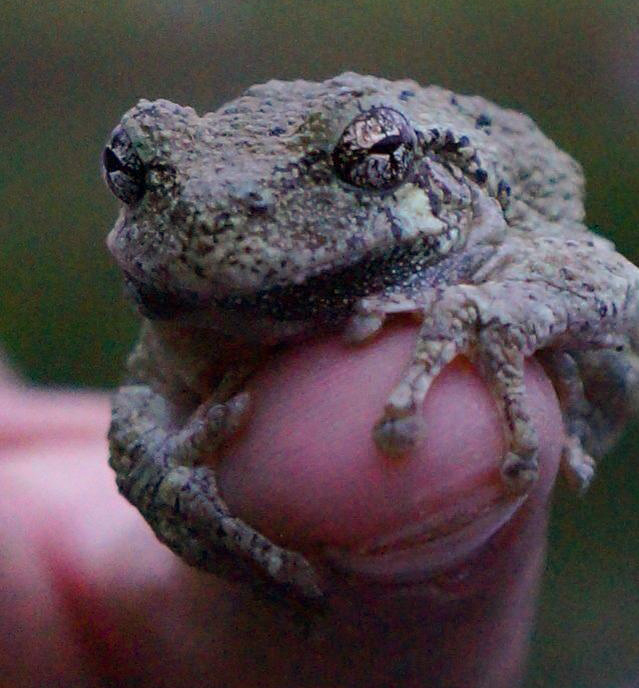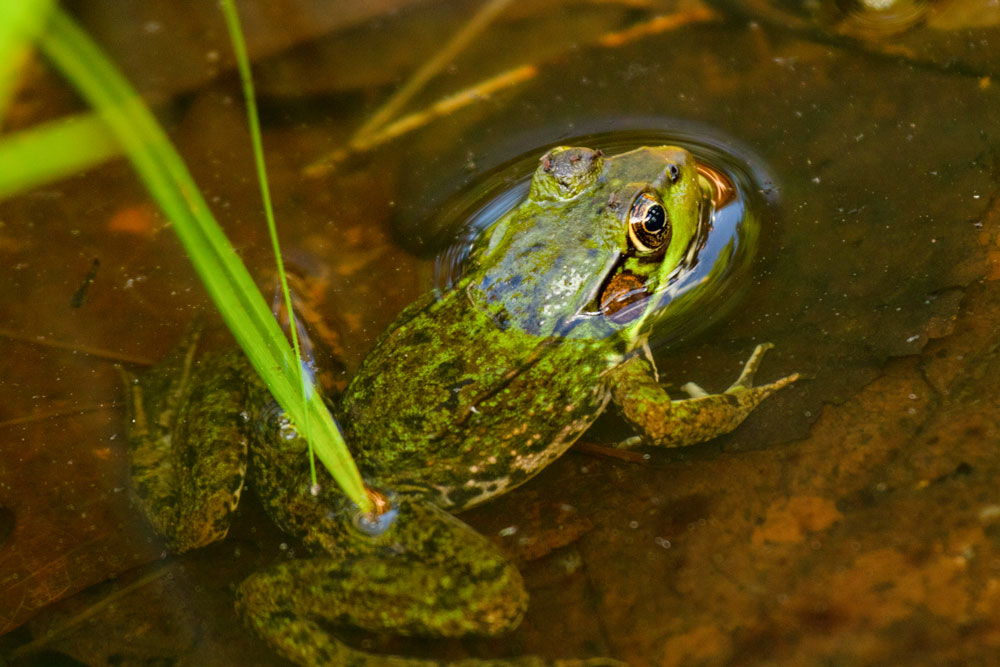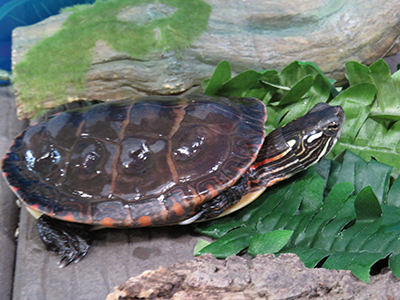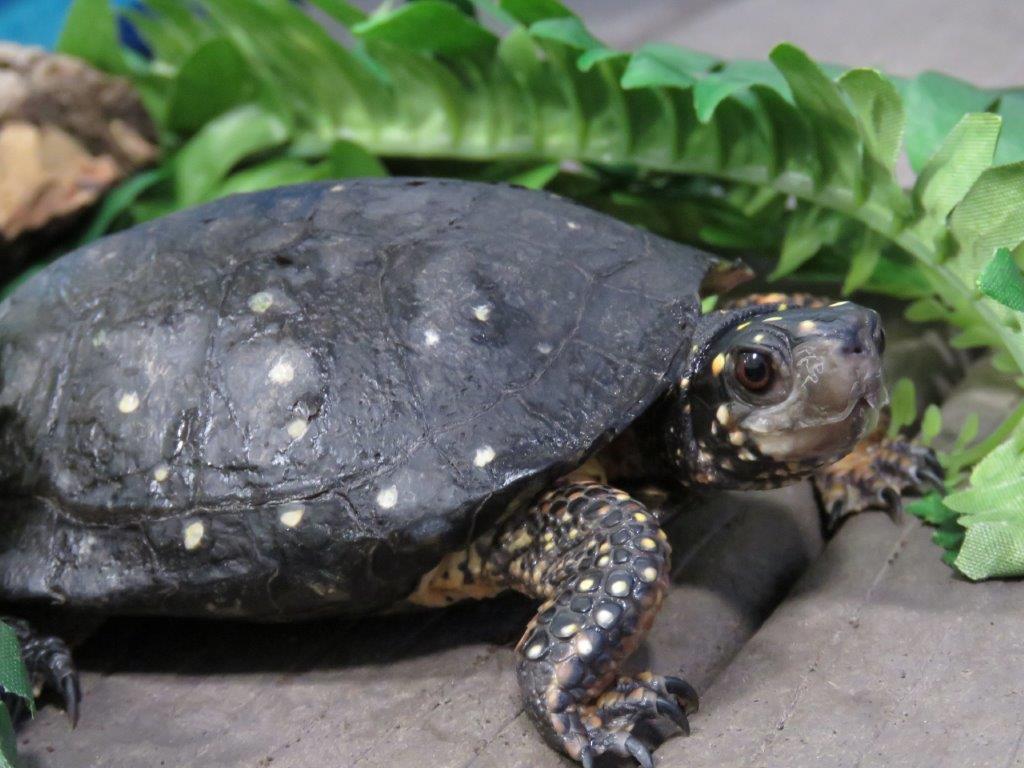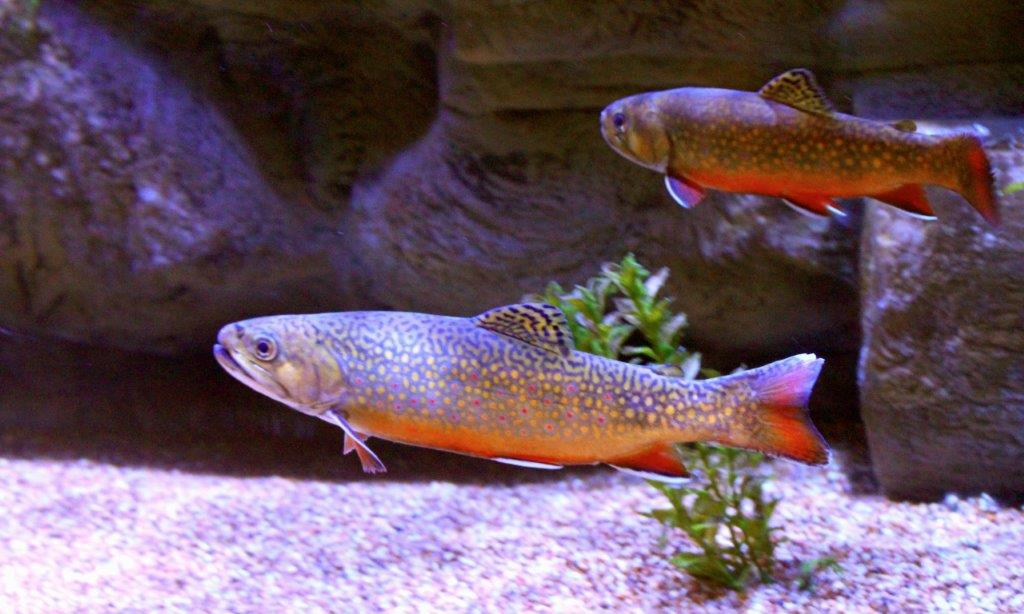Bobcat
Lynx rufus
| Kingdom | Animalia |
|---|---|
| Phylum | Chordata |
| Class | Mammalia |
| Order | Carnivora |
| Family | Felidea |
| Genus | Lynx |
| Species | L. rufus |
| Lifespan | typically 3-4 years in the wild, but occasionally to 10-12 years |
| Size | 25-40 inches long, weight 15-40 pounds |
| Litter size | 2 to 4 |
| Speed | 25-30 mph for short distances |
| Status | Rare to common depending upon geographic region |

About Bobcats
What do bobcats look like?
A bobcat’s short, dense, soft fur is a tawny brown interspersed with black lines and spots – a perfect blend with its forest environment. Males and females are colored alike but males are considerably larger. Its short, or bobbed, tail gives this animal its name.
Where are bobcats found?
Nocturnal and elusive, bobcats are rarely seen. In New England, bobcats prefer young forest stands with very dense undergrowth, rock ledges, and swampy wetlands. Size of territory varies – males have larger territories of about 36 square miles whereas females stay within approximately 12 square miles. New Hampshire is at the northern edge of the bobcat’s range. With smaller paws, they are not as well adapted to hunting in snow as their northern relative, the lynx.
What do bobcats eat?
Most of a bobcat’s diet consists of lagomorphs (rabbits and hares) and rodents such as mice and squirrels, but will also take other small mammals, birds, and occasionally deer. Larger prey may be cached – covered with leaves and other material and revisited. Good senses of sight and hearing are essential in catching prey. Bobcats have excellent night vision and their large ears topped with short tufts help them hear from a distance. Hunting by ambush or stalking, bobcats may work from the ground or may lie motionless in a tree waiting for prey. They are able to leap up to 12 feet. The bobcat’s sharp teeth and retractable claws make it an impressive predator.
How are the young of bobcats raised?
Breeding season for bobcats is generally late February to March, with a gestation period of 62 days. Dens may be in rock crevices or in hollow trees or logs. Two to four kits are born, well furred and spotted and weighing about 12 ounces. Although they are weaned at 60-70 days, young bobcats stay with the female until fall or early winter to learn hunting skills.
Fun Facts!
- Bobcats have no real dislike of water and can swim. Sounds? They make snarls, caterwauls, spits and screams.
- A bobcat’s retractable claws are formidable – they measure over ¾ of an inch along the curve of the claw.
- Another interesting characteristic of bobcats is a white patch on the back of each ear, thought to be a guide for young bobcats following their mother at night.




